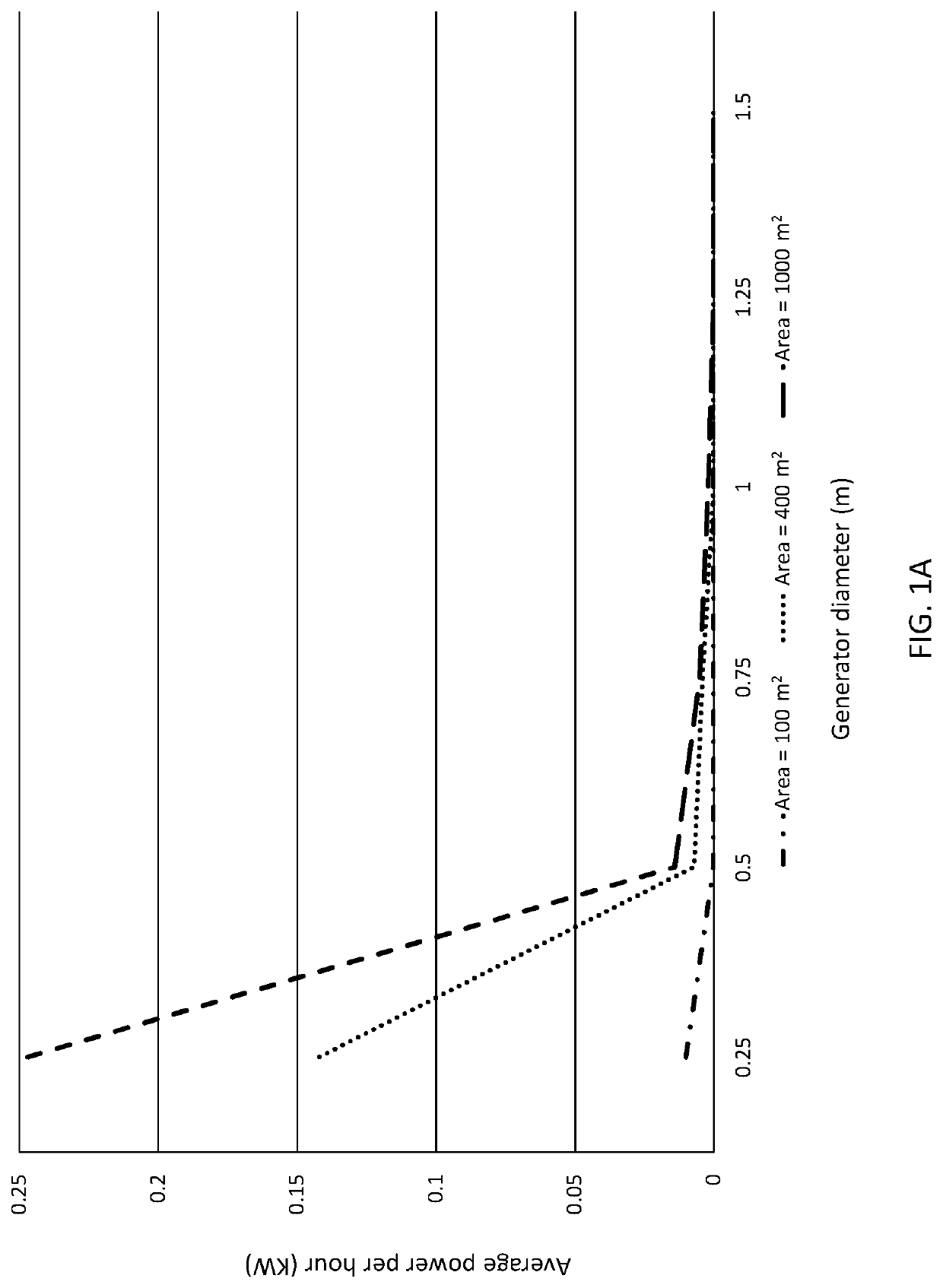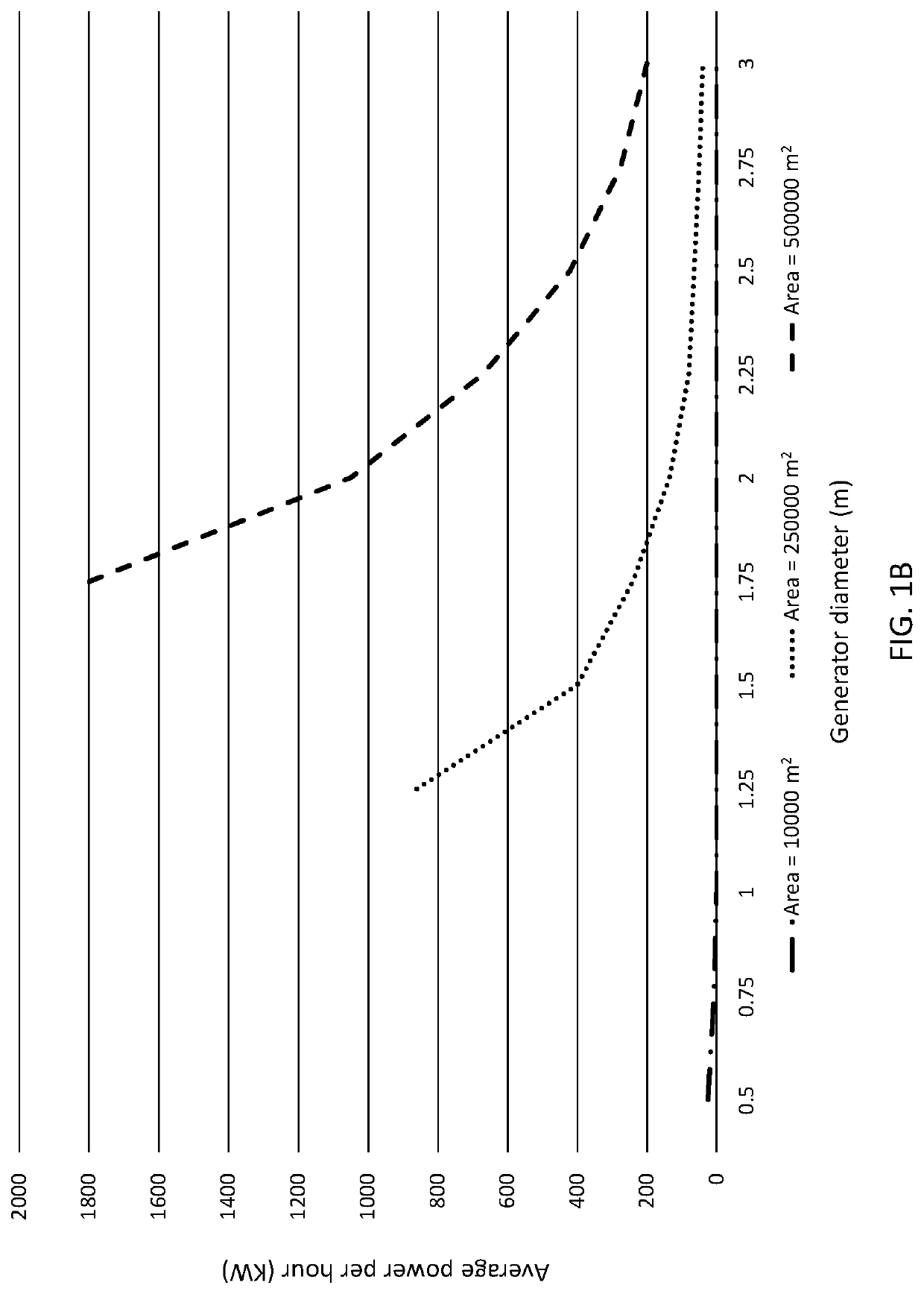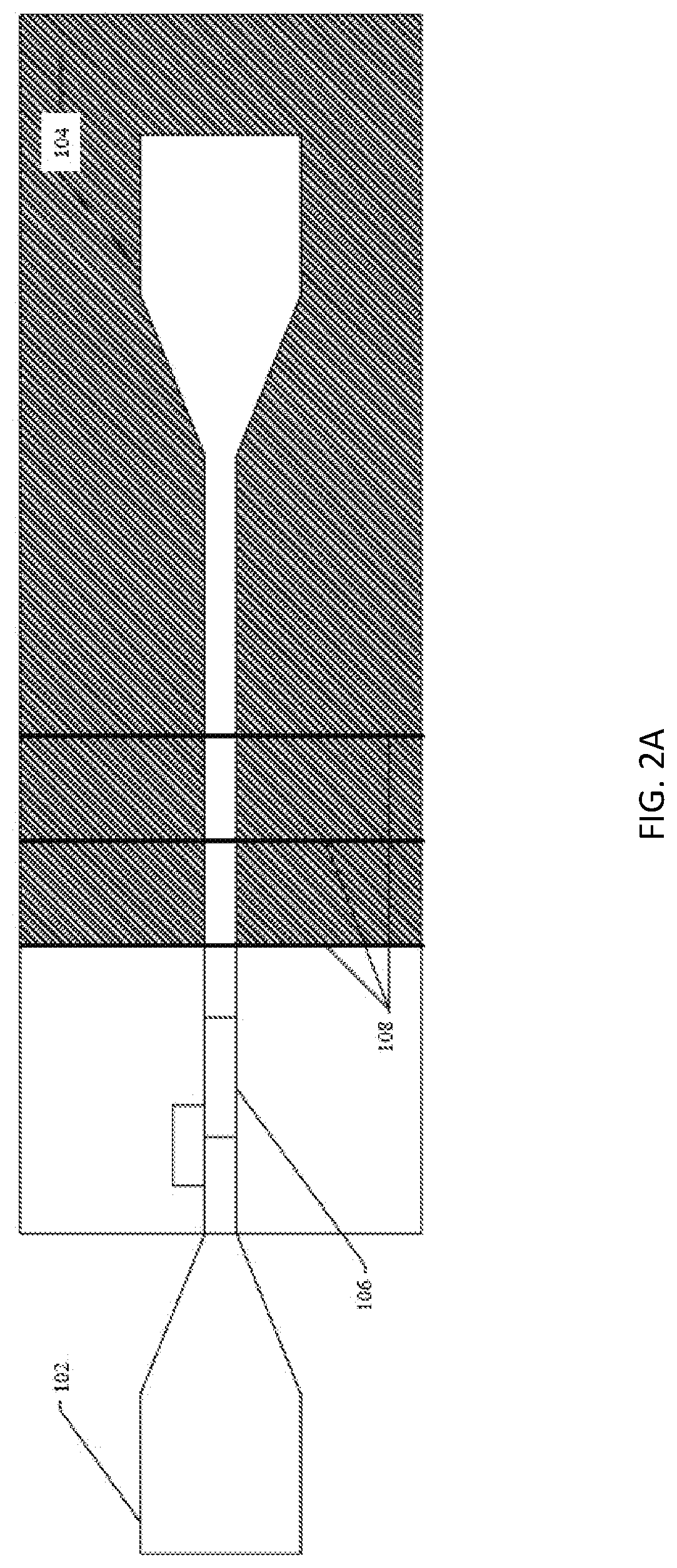Integrated system for optimal extraction of head-driven tidal energy with minimal or no adverse environmental effects
a technology of head-driven tidal energy and integrated system, which is applied in the field of tide energy, to achieve the effect of minimising negative environmental effects, minimal negative environmental effects, and maximizing energy production
- Summary
- Abstract
- Description
- Claims
- Application Information
AI Technical Summary
Benefits of technology
Problems solved by technology
Method used
Image
Examples
example 1 (see figs.2a and 2b)
Example 1 (See FIGS. 2A and 2B)
[0036]An example of the mechanics of an embodiment of the current system is now discussed herein. The system includes an on-shore bladder 102 and an off-shore bladder 104, with a turbine housing 106 disposed between the bladders. Importantly, the entire system, including the bladders, the turbine housing, and the components disposed within the turbine housing, are part of a closed system. As such, the components are not in communication with the external environment; accordingly, the system is insulated, thereby reducing the potential environmental impacts of the system as compared with similar techniques of capturing tidal energy from bodies of water and along coastlines. Accordingly, instead of directly using water, such as sea water or rain water, to capture energy, the system indirectly uses external water to translate liquid contained within the closed system between the bladders. The translation of the liquid in the system will be discussed herei...
example 2 (see fig.3)
Example 2 (See FIG. 3)
[0044]An example of the change in velocity caused by the valves used in combination with the bladders of the tidal system is now discussed herein. An experiment was performed to determine flow rates, or velocities, through pipes having varying structures, and the effects on the pipes of using a valve, or nozzle, the increase the flow rate. Theoretical results were calculated and were compared with experimental results obtain through testing. As shown in the table of FIG. 3, the theoretical results of the introduction of a nozzle to pipes having varying degrees of convergence yielded a 509% increase in velocity. Accordingly, it was theorized that the increased velocity through both a convergent structure in a pipe (as opposed to a straight pipe), as well as the introduction of valves, or nozzles, to the pipe, would result in an increase in the tidal energy extracted by the bladder system discussed above.
[0045]The experiment was designed to analyze the flow rates...
PUM
 Login to View More
Login to View More Abstract
Description
Claims
Application Information
 Login to View More
Login to View More - R&D
- Intellectual Property
- Life Sciences
- Materials
- Tech Scout
- Unparalleled Data Quality
- Higher Quality Content
- 60% Fewer Hallucinations
Browse by: Latest US Patents, China's latest patents, Technical Efficacy Thesaurus, Application Domain, Technology Topic, Popular Technical Reports.
© 2025 PatSnap. All rights reserved.Legal|Privacy policy|Modern Slavery Act Transparency Statement|Sitemap|About US| Contact US: help@patsnap.com



